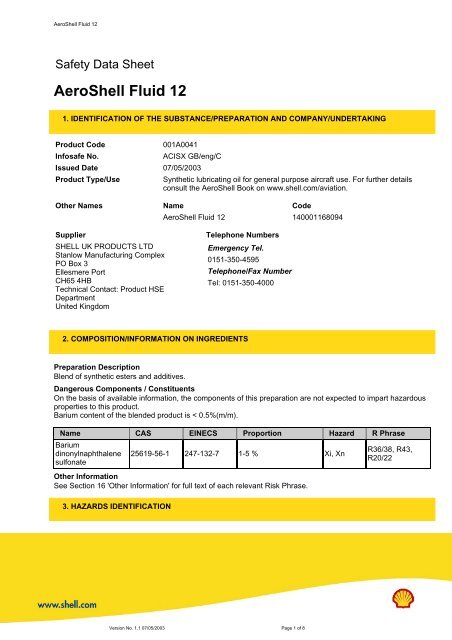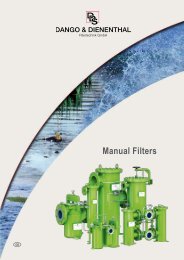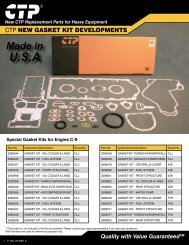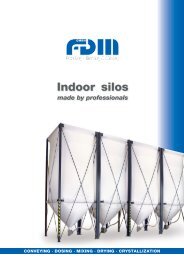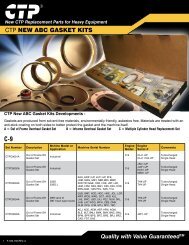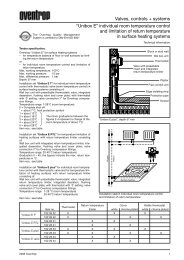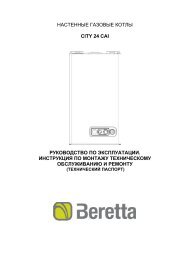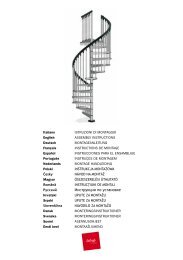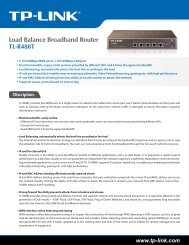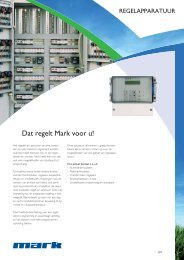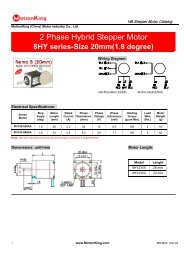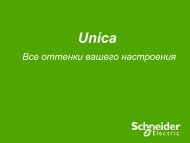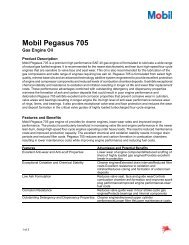AeroShell Fluid 12
AeroShell Fluid 12
AeroShell Fluid 12
Create successful ePaper yourself
Turn your PDF publications into a flip-book with our unique Google optimized e-Paper software.
<strong>AeroShell</strong> <strong>Fluid</strong> <strong>12</strong><br />
Safety Data Sheet<br />
<strong>AeroShell</strong> <strong>Fluid</strong> <strong>12</strong><br />
1. IDENTIFICATION OF THE SUBSTANCE/PREPARATION AND COMPANY/UNDERTAKING<br />
Product Code<br />
Infosafe No.<br />
001A0041<br />
ACISX GB/eng/C<br />
Issued Date 07/05/2003<br />
Product Type/Use<br />
Synthetic lubricating oil for general purpose aircraft use. For further details<br />
consult the <strong>AeroShell</strong> Book on www.shell.com/aviation.<br />
Other Names Name Code<br />
<strong>AeroShell</strong> <strong>Fluid</strong> <strong>12</strong> 140001168094<br />
Supplier<br />
SHELL UK PRODUCTS LTD<br />
Stanlow Manufacturing Complex<br />
PO Box 3<br />
Ellesmere Port<br />
CH65 4HB<br />
Technical Contact: Product HSE<br />
Department<br />
United Kingdom<br />
Telephone Numbers<br />
Emergency Tel.<br />
0151-350-4595<br />
Telephone/Fax Number<br />
Tel: 0151-350-4000<br />
2. COMPOSITION/INFORMATION ON INGREDIENTS<br />
Preparation Description<br />
Blend of synthetic esters and additives.<br />
Dangerous Components / Constituents<br />
On the basis of available information, the components of this preparation are not expected to impart hazardous<br />
properties to this product.<br />
Barium content of the blended product is < 0.5%(m/m).<br />
Name CAS EINECS Proportion Hazard R Phrase<br />
Barium<br />
dinonylnaphthalene<br />
sulfonate<br />
25619-56-1 247-132-7 1-5 % Xi, Xn<br />
Other Information<br />
See Section 16 'Other Information' for full text of each relevant Risk Phrase.<br />
R36/38, R43,<br />
R20/22<br />
3. HAZARDS IDENTIFICATION<br />
Version No. 1.1 07/05/2003 Page 1 of 8
<strong>AeroShell</strong> <strong>Fluid</strong> <strong>12</strong><br />
EC Classification<br />
Not classified as Dangerous under EC criteria.<br />
Human Health Hazards<br />
No specific hazards under normal use conditions. Prolonged or repeated exposure may cause dermatitis. Used<br />
oil may contain harmful impurities.<br />
Safety Hazards<br />
Not classified as flammable, but will burn.<br />
Environmental Hazards<br />
Not classified as dangerous for the environment.<br />
4. FIRST AID MEASURES<br />
Symptoms and Effects<br />
Not expected to give rise to an acute hazard under normal conditions of use. May cause an allergic skin<br />
reaction in sensitive individuals.<br />
Inhalation<br />
In the unlikely event of dizziness or nausea, remove casualty to fresh air. If symptoms persist, obtain medical<br />
attention.<br />
Skin<br />
Remove contaminated clothing and wash affected skin with soap and water. If persistent irritation occurs, obtain<br />
medical attention. If high pressure injection injuries occur, obtain medical attention immediately.<br />
Eye<br />
Flush eye with copious quantities of water. If persistent irritation occurs, obtain medical attention.<br />
Ingestion<br />
Wash out mouth with water and obtain medical attention. Do not induce vomiting.<br />
Advice to Doctor<br />
Treat symptomatically. Aspiration into the lungs may cause chemical pneumonitis. Dermatitis may result from<br />
prolonged or repeated exposure.<br />
High pressure injection injuries may require surgical intervention and possibly steroid therapy to minimise tissue<br />
damage and loss of function. Because entry wounds are small and may not reflect the seriousness of the<br />
underlying damage, surgical exploration to determine the extent of involvement may be necessary. Emesis of<br />
lubricants is not usually necessary, unless a large amount has been ingested, or some other compound has<br />
been dissolved in the product. If this is indicated, for example, when there is rapid onset of central nervous<br />
system depression from large ingested volume - gastric lavage under controlled hospital conditions, with full<br />
protection of the airway is required. Supportive care may include oxygen, arterial blood gas monitoring,<br />
respiratory support, and, if aspiration has occurred, treatment with corticosteriods and antibiotics. Seizures<br />
should be controlled with Diazepam, or appropriate equivalent drug.<br />
5. FIRE FIGHTING MEASURES<br />
Specific Hazards<br />
Combustion is likely to give rise to a complex mixture of airborne solid and liquid particulates and gases,<br />
including carbon monoxide and unidentified organic and inorganic compounds.<br />
Extinguishing Media<br />
Foam and dry chemical powder. Carbon dioxide, sand or earth may be used for small fires only.<br />
Unsuitable Extinguishing Media<br />
Water in jet. Use of halon extinguishers should be avoided for environmental reasons.<br />
Version No. 1.1 07/05/2003 Page 2 of 8
<strong>AeroShell</strong> <strong>Fluid</strong> <strong>12</strong><br />
Protective Equipment<br />
Proper protective equipment including breathing apparatus must be worn when approaching a fire in a confined<br />
space.<br />
6. ACCIDENTAL RELEASE MEASURES<br />
Personal Precautions<br />
Avoid contact with skin and eyes. Wear PVC, Neoprene or nitrile rubber gloves. Wear rubber knee length safety<br />
boots and PVC Jacket and Trousers. Wear safety glasses or full face shield if splashes are likely to occur.<br />
Environmental Precautions<br />
Prevent from spreading or entering into drains, ditches or rivers by using sand, earth, or other appropriate<br />
barriers. Inform local authorities if this cannot be prevented.<br />
Clean-up Methods - Small Spillages<br />
Absorb liquid with sand or earth. Sweep up and remove to a suitable, clearly marked container for disposal in<br />
accordance with local regulations.<br />
Clean-up Methods - Large Spillages<br />
Prevent from spreading by making a barrier with sand, earth or other containment material. Reclaim liquid<br />
directly or in an absorbent. Dispose of as for small spills.<br />
7. HANDLING AND STORAGE<br />
Handling<br />
Use local exhaust ventilation if there is risk of inhalation of vapours, mists or aerosols. Avoid prolonged or<br />
repeated contact with skin. When handling product in drums, safety footwear should be worn and proper<br />
handling equipment should be used. Prevent spillages. Cloth, paper and other materials that are used to absorb<br />
spills present a fire hazard. Avoid their accumulation by disposing of them safely and immediately. In addition to<br />
any specific recommendations given for controls of risks to health, safety and the environment, an assessment<br />
of risks must be made to help determine controls appropriate to local circumstances. Exposure to this product<br />
should be reduced as low as reasonably practicable. Reference should be made to the Health and Safety<br />
Executive's publication 'COSHH Essentials'.<br />
Storage<br />
Keep in a cool, dry, well-ventilated place. Use properly labelled and closeable containers. Avoid direct sunlight,<br />
heat sources, and strong oxidizing agents.<br />
Storage Temperatures<br />
0ºC Minimum. 50ºC Maximum.<br />
Recommended Materials<br />
For containers or container linings, use mild steel or high density polyethylene.<br />
Unsuitable Materials<br />
For containers or container linings, avoid PVC.<br />
Other Information<br />
Polyethylene containers should not be exposed to high temperatures because of possible risk of distortion.<br />
8. EXPOSURE CONTROLS, PERSONAL PROTECTION<br />
Exposure Limits<br />
No Exposure Limit Established<br />
Version No. 1.1 07/05/2003 Page 3 of 8
<strong>AeroShell</strong> <strong>Fluid</strong> <strong>12</strong><br />
Exposure Controls<br />
The use of personal protective equipment is only one aspect of an integrated approach to the Control Of<br />
Substances Hazardous to Health.<br />
The management of Health and Safety at Work Regulations 1992 require employers to identify and evaluate the<br />
risks to health and to implement appropriate measures to eliminate or minimise those risks. The choice of<br />
personal protective equipment is highly dependent upon local conditions, e.g. exposure to other chemical<br />
substances and micro-organisms, thermal hazards (protection from extremes of cold and heat), electrical<br />
hazards, mechanical hazards and appropriate degree of manual dexterity required to undertake an activity.<br />
Whilst the content of this section may inform the choice of personal protective equipment used, the limitations of<br />
any information which can be provided must be fully understood, e.g. personal protective equipment chosen to<br />
protect employees from occasional splashes maybe entirely inadequate for activities involving partial or<br />
complete immersion.If the levels of oil mist or vapour in air are likely to exceed the occupational exposure<br />
standards then consideration should be given to the use of local exhaust ventilation to reduce personal<br />
exposure.<br />
The choice of personal protective equipment should only be undertaken in the light of a full risk assessment by<br />
a suitably qualified competent person ( e.g. a professionally qualified occupational hygienist).<br />
Effective protection is only achieved by correctly fitting and well maintained equipment and employers should<br />
ensure that appropriate training is given. All personal protective equipment should be regularly inspected and<br />
replaced if defective.<br />
Respiratory Protection<br />
Care should be taken to keep exposures below applicable occupational exposure limits. If this cannot be<br />
achieved, use of a respirator fitted with an organic vapour cartridge combined with a particulate pre-filter should<br />
be considered. Half masks (EN 149) or valved half masks (EN 405) in combination with type A2 (EN 141) and<br />
P2/3 (EN 143) pre-filters maybe considered.<br />
If product is subjected to elevated temperatures, half masks (EN 149) or valved half masks (EN 405) in<br />
combination with type AX (EN 371) and P2/3 (EN 143) prefilters maybe considered.<br />
Hand Protection<br />
Chemical protective gloves are made from a wide range of materials, but there is no single glove material ( or<br />
combination of materials) which gives unlimited resistance to any individual or combination of substances or<br />
preparations. The extent of the breakthrough time will be affected by a combination of factors which include<br />
permeation, penetration, degradation, use pattern ( full immersion, occasional contacts) and how the glove is<br />
stored when not in use.<br />
Theoretical maximum levels of protection are seldom achieved in practice and the actual level of protection can<br />
be difficult to assess. Effective breakthrough time should be used with care and a margin of safety should be<br />
applied. HSE guidance on protective gloves recommends a 75% safety factor to be applied to any figures<br />
obtained in a laboratory test. Nitrile gloves may offer relatively long breakthrough times and slow permeation<br />
rates. Test data, e.g breakthrough data obtained through test standard EN374-3:1994 are available from<br />
reputable equipment suppliers.<br />
Personal hygiene is a key element of effective hand care. Gloves must only be worn on clean hands. After using<br />
gloves, hands should be washed and dried thoroughly. A non perfumed moisturiser should be applied.<br />
Eye Protection<br />
Goggles conforming to a minimum standard of EN 166 345B should be considered if there is a possibility of eye<br />
contact with the product through splashing. Higher rated eye protection must be considered for highly<br />
hazardous operations or work areas. For example, employees involved in metalworking operations such as<br />
chipping, grinding or cutting may require additional protection to avert injury from fast moving particles or broken<br />
tools.<br />
Body Protection<br />
Minimise all forms of skin contact. Overalls and shoes with oil resistant soles should be worn. Launder overalls<br />
and undergarments regularly.<br />
Environmental Exposure Controls<br />
Minimise release to the environment. An environmental assessment must be made to ensure compliance with<br />
local environmental legislation.<br />
9. PHYSICAL AND CHEMICAL PROPERTIES<br />
Version No. 1.1 07/05/2003 Page 4 of 8
<strong>AeroShell</strong> <strong>Fluid</strong> <strong>12</strong><br />
Colour<br />
Physical State<br />
Odour<br />
pH Value<br />
Vapour Pressure<br />
Initial Boiling Point<br />
Solubility in Water<br />
Density<br />
Flash Point<br />
Flammable Limits - Upper<br />
Flammable Limits - Lower<br />
Auto-Ignition Temperature<br />
Kinematic Viscosity<br />
Evaporation Rate<br />
Vapour Density (Air=1)<br />
Partition co-efficient, n-octanol/water<br />
Pour Point<br />
Elements Content<br />
Amber.<br />
Liquid at ambient temperature.<br />
Slight.<br />
Data not available.<br />
Data not available.<br />
Data not available.<br />
Negligible.<br />
circa 920 kg/m3 at 15ºC.<br />
circa 232ºC (COC).<br />
Data not available.<br />
Data not available.<br />
Data not available.<br />
circa 8.8 mm2/s at 54.4ºC.<br />
Data not available.<br />
Data not available.<br />
Data not available.<br />
2000 mg/kg.<br />
Acute Toxicity - Dermal<br />
LD50 expected to be > 2000 mg/kg.<br />
Acute Toxicity - Inhalation<br />
Not considered to be an inhalation hazard under normal conditions of use.<br />
Eye Irritation<br />
Version No. 1.1 07/05/2003 Page 5 of 8
<strong>AeroShell</strong> <strong>Fluid</strong> <strong>12</strong><br />
Expected to be slightly irritating.<br />
Skin Irritation<br />
Expected to be slightly irritating.<br />
Respiratory Irritation<br />
If mists are inhaled, slight irritation of the respiratory tract may occur.<br />
Skin Sensitisation<br />
Not expected to be a skin sensitizer.<br />
Carcinogenicity<br />
Product is based on mineral oils of types shown to be non-carcinogenic in animal skin-painting studies. Other<br />
components are not known to be associated with carcinogenic effects.<br />
Mutagenicity<br />
Not considered to be a mutagenic hazard.<br />
Reproductive Toxicity<br />
Not considered to be toxic to reproduction.<br />
Other Information<br />
Prolonged and/or repeated contact with this product can result in defatting of the skin, particularly at elevated<br />
temperatures. This can lead to irritation and possibly dermatitis, especially under conditions of poor personal<br />
hygiene. Skin contact should be minimised. Used oils may contain harmful impurities that have accumulated<br />
during use. The concentration of such impurities will depend on use and they may present risks to health and<br />
the environment on disposal. ALL used oil should be handled with caution and skin contact avoided as far as<br />
possible.<br />
<strong>12</strong>. ECOLOGICAL INFORMATION<br />
Basis for Assessment<br />
Ecotoxicological data have not been determined specifically for this product. Information given is based on a<br />
knowledge of the components and the ecotoxicology of similar products.<br />
Mobility<br />
Liquid under most environmental conditions. Floats on water. If it enters soil, it will adsorb to soil particles and<br />
will not be mobile.<br />
Persistence / Degradability<br />
Not expected to be readily biodegradable. Major constituents are expected to be inherently biodegradable, but<br />
the product contains components that may persist in the environment.<br />
Bioaccumulation<br />
Contains components with the potential to bioaccumulate.<br />
Ecotoxicity<br />
Poorly soluble mixture. May cause physical fouling of aquatic organisms. Product is expected to be practically<br />
non-toxic to aquatic organisms, LL/EL50 >100 mg/l. (LL/EL50 expressed as the nominal amount of product<br />
required to prepare aqueous test extract).<br />
Other Adverse Effects<br />
Not expected to have ozone depletion potential, photochemical ozone creation potential or global warming<br />
potential.<br />
Product is a mixture of non-volatile components, which are not expected to be released to air in any significant<br />
quantities.<br />
13. DISPOSAL CONSIDERATIONS<br />
Version No. 1.1 07/05/2003 Page 6 of 8
<strong>AeroShell</strong> <strong>Fluid</strong> <strong>12</strong><br />
Waste Disposal<br />
Recycle or dispose of in accordance with prevailing regulations, with a recognised collector or contractor. The<br />
competence of the contractor to deal satisfactorily with this type of product should be established beforehand.<br />
Do not pollute the soil, water or environment with the waste product. Note that this product contains barium<br />
compounds.<br />
Product Disposal<br />
As for waste disposal.<br />
Container Disposal<br />
Recycle or dispose of in accordance with the legislation in force with a recognised collector or contractor.<br />
Local Legislation<br />
The Special Waste Regulations 1996.<br />
14. TRANSPORT INFORMATION<br />
Transport Information<br />
Not dangerous for transport under ADR/RID, IMO and IATA/ICAO regulations.<br />
15. REGULATORY INFORMATION<br />
EC Symbols<br />
EC Risk Phrase<br />
EC Safety Phrase<br />
EINECS<br />
None.<br />
Not classified.<br />
Not classified.<br />
All components listed or polymer exempt.<br />
TSCA (USA)<br />
All components in compliance.<br />
National Legislation<br />
Environmental Protection Act 1990 (as amended).<br />
Health and Safety at Work Act 1974<br />
Consumers Protection Act 1987<br />
Control of Pollution Act 1974<br />
Environmental Act 1995<br />
Factories Act 1961<br />
Carriage of Dangerous Goods by Road and Rail (Classification, Packaging and Labelling) Regulations<br />
Chemicals (Hazard Information and Packaging for Supply) Regulations 2002.<br />
Control of Substances Hazardous to Health Regulations 1994 (as amended).<br />
Road Traffic (Carriage of Dangerous Substances in Packages) Regulations<br />
Merchant Shipping (Dangerous Goods and Marine Pollutants) Regulations<br />
Road Traffic (Carriage of Dangerous Substances in Road Tankers in Tank Containers) Regulations<br />
Road Traffic (Training of Drivers of Vehicles Carrying Dangerous Goods) Regulations<br />
Reporting of Injuries, Diseases and Dangerous Occurences Regulations<br />
Health and Safety (First Aid) Regulations 1981<br />
Personal Protective Equipment (EC Directive) Regulations 1992<br />
Personal Protective Equipment at Work Regulations 1992<br />
Packaging & Labelling<br />
Contains barium sulphonate. May produce an allergic reaction. Safety data sheet available for professional user<br />
on request.<br />
16. OTHER INFORMATION<br />
Version No. 1.1 07/05/2003 Page 7 of 8
<strong>AeroShell</strong> <strong>Fluid</strong> <strong>12</strong><br />
Revisions Highlighted<br />
No amendments made to information. To assist harmonisation of sds authoring practices, a version number has<br />
been introduced.<br />
References<br />
European Model Code of Safe Practice in the Storage and Handling of Petroleum Products. EN 374-2:1994<br />
Protective gloves against chemicals and micro-organisms<br />
EN 149:2001 Respiratory protective devices - filtering half masks to protect against particles - requirements,<br />
testing, marking<br />
EN 405:1992 Respiratory protective devices - valved filtering half masks to protect against gases or gases and<br />
particles - requirements, testing, marking.<br />
EN 141:2000 Respiratory protective devices - gas filters and combined filters - requirements, testing, marking<br />
EN 143:2000 Respiratory protective devices - particle filters - requirements, testing, marking<br />
EN 166:1995 Personal eye-protection - specification.<br />
Restrictions<br />
Not to be used as an engine lubricating oil. Contains a synthetic oil and should not be used in contact with<br />
incompatible seal materials. This product must be used, handled and applied in accordance with the<br />
requirements of the equipment manufacturer's manuals, bulletins and other documentation.<br />
List of R Phrases in Section 2<br />
R43 May cause sensitization by skin contact.<br />
R20/22 Harmful by inhalation and if swallowed.<br />
R36/38 Irritating to eyes and skin.<br />
Technical Contact Numbers<br />
0151-350-4000.<br />
Further Information<br />
This information is based on our current knowledge and is intended to describe the product for the purposes of<br />
health, safety and environmental requirements only. It does not constitute a guarantee for any specific property<br />
of the product.<br />
... End Of SDS ...<br />
Version No. 1.1 07/05/2003 Page 8 of 8


